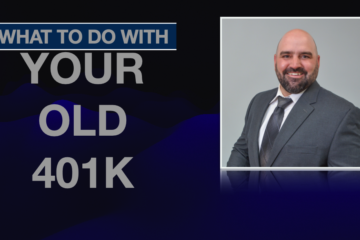Saving and Investing with Dollar-Cost Averaging
Gabe Fransen | January 14, 2022
With the new year here, many of you will have new goals driven by a New Year’s resolution and many of those goals will be financially related. I’m confident that none of those financially related goals are focused on losing money or having a lower net worth this time next year than what you have right now. However, you quite likely will have a goal that is focused on having more money or a higher net worth at this time next year compared to right now. We know the value of saving and investing during working years, never have we heard a client say that they are upset because they saved or invested too much into their retirement accounts.
One of the most effective ways to build up those retirement investment accounts is to utilize an investment strategy called dollar-cost averaging. This is a basic concept of investing in a target asset or investment strategy with the same amount of dollars on a recurring basis, typically monthly, without regard to the asset price. This investment strategy aims to reduce the impact of volatility on the overall purchase and eliminates the risk of the purchase taking place at the wrong time if one was to invest one lump sum in a single transaction.
In a perfect investment world, you would buy positions when they are at the lowest cost – most people don’t have the luxury of being that good or that lucky. Utilizing the dollar-cost averaging strategy takes the guess work out of it and allows you to buy more of the asset when it is cheap and less of it when it is expensive, here is an example:
| Month | Asset Cost | Contribution | Shares Bought | Shares Owned | Total Value |
|---|---|---|---|---|---|
| January | $10.00 | $50 | 5.00 | 5.00 | $50.00 |
| February | $10.50 | $50 | 4.76 | 9.76 | $102.50 |
| March | $10.75 | $50 | 4.65 | 14.41 | $154.94 |
| April | $11.00 | $50 | 4.55 | 18.96 | $208.54 |
| May | $10.25 | $50 | 4.88 | 23.84 | $244.32 |
| June | $9.95 | $50 | 5.03 | 28.86 | $287.17 |
| July | $10.15 | $50 | 4.93 | 33.79 | $342.95 |
| August | $10.35 | $50 | 4.83 | 38.62 | $399.70 |
| September | $10.75 | $50 | 4.65 | 43.27 | $465.15 |
| October | $11.25 | $50 | 4.44 | 47.71 | $536.79 |
| November | $11.50 | $50 | 4.35 | 52.06 | $598.71 |
| December | $12.00 | $50 | 4.17 | 56.23 | $674.75 |
| Dollar Cost Average | Total Contribution | Total Shares Bought | Investment Value | Profit/Loss | |
| $10.70 | $600 | 56.23 | $674.75 | $74.75 |
It is good to point out that this strategy does not mitigate the risk of an asset that declines in value, however, you can see with an increase market value of the asset over time, the strategy works out favorably. Using this strategy on an individual stock without knowing about the details of the company could have an unhappy ending for the investor. This strategy fits well for the less-informed investor that is investing in index funds, mutual funds or exchange traded funds.
Now that we have discussed how to invest, we must talk about what to invest. As I mentioned earlier in this article, we have yet to run across a client in our practice that is upset because they had too many retirement assets, however, we’ve seen several that wish they had more assets to work with. Using dollar-cost averaging and compounding interest, time is our friend. We have talked about dollar-cost averaging already, compounding interest simply stated is earning money on your earnings, so the sooner you get the money working for you, the better.
There are a few things that we mention to folks in their contribution years to help make sure their financial new years resolutions don’t fall by the wayside.
- You have to make it a priority!
- Get rid of high interest debt. If you carry debt on a credit card and are only paying the minimum payment, you are likely incurring huge interest costs. By only making minimum payments on a credit card that has $1,000 of debt on it, it could take you as long as 117 months to pay it off and you could be hit with over $1,000 of interest during that time. Get rid of that high interest debt and put that money to work for you through dollar-cost averaging and compounding interest.
- Make it a regular habit or even better, automate it. With today’s technology, it is easy to set up automated ACH payments going from your checking account to your investment account at whatever frequency you want. This ensures that you are paying yourself or your future self for that matter, on regular intervals.
- To ensure your retirement assets are taken care of and efficiently working for you, talk to an expert that can help you plan for your financial needs and manage your assets to get the most out of them.


